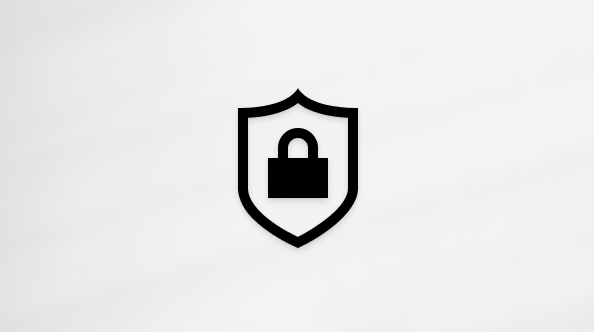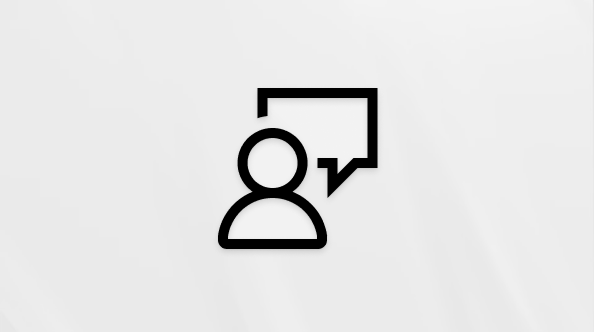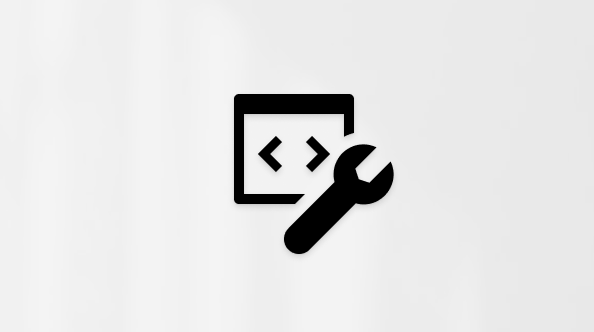To troubleshoot the following problems, select any heading to see more info. Next, follow the steps to try to get things working again.
If you can't see Start or your taskbar, the taskbar may be hidden. To see it, try these steps.
-
Press the Windows logo key + I, then select Personalization > Taskbar .
-
Select Taskbar behaviors to expand it.
-
Clear the Automatically hide the taskbar box.
-
Press the Windows logo key + I to open Settings.
-
Select Windows Update, then select Check for updates. Install any available updates and restart your computer if required.
Note: Need another way to get to Settings? Press the Windows logo key + R, then type ms-settings: (note the colon) in the Open box. Select OK to open Settings.
If you didn’t have any updates that required a restart, it’s still a good idea to restart your device to make sure any pending updates are installed.
To restart your device when you can’t access Start , press Ctrl + Alt + Delete, select Power and then select Restart .
Note: You can also manually shut down your device by pressing and holding the power button. Shutting down this way risks losing unsaved data, so first be sure to save and close everything you’re working on. If you shut down this way, you can restart your device by pressing the power button again.
While it’s likely you have the most recent drivers, if you’re still having trouble with the Start menu, you can try fixing it by manually updating your graphics or audio drivers. For more info, see Update drivers manually in Windows.
-
Press Ctrl + Shift + Esc to open Task Manager. You may need to select More details at the bottom of the window to see everything.
Note: If you tapped or selected a browser window before you pressed Ctrl + Shift + Esc, you'll get the browser task manager. Close the browser task manager, tap or select a non-browser window, and then continue with the steps below.
-
Select the Processes tab.
-
Scroll down to Windows Explorer, select it, then select Restart.
The process may take a few seconds, and your taskbar and Start menu may not be visible while Windows Explorer restarts. You can close Task Manager when the process is complete.
If you still can’t fix your problem with the Start menu, try signing in with an administrator account. To see which account you're signed in with:
-
Select Start .
-
Right-click your profile image or name.
-
Select Change account settings. If you see "Administrator" near your name, then you're using an administrator account.
If you aren't using an administrator account and you don't have one, you can create an account and set it as an administrator account.
Create the new administrator account
-
Press the Windows logo key + I.
-
Select Accounts > Family & other people (or Other users , if you’re using Windows 11 Enterprise).
-
Under Other users , select Add someone else to this PC or Add account.
-
Provide the requested info and follow the prompts to create the account.
Make the new account an administrator account
-
Under Family & other people (or Other users , if you're using Windows 11 Enterprise), choose the account you created, and then select Change account type.
-
Under Account type, select Administrator > OK.
Sign out of your account and then sign in to your new account. If everything is fixed, move your personal data and files to the new account.
To move your personal files from your old account to your new account, try opening File Explorer, expanding This PC, selecting OSDisk (C:), and looking in the Users folder, where you should see folders for both accounts. You can then copy and paste your files from the old account folder to similar locations in the new account folder. Or if you prefer, you can upload your files from your old account to OneDrive, and then sign into the new account and download the files from OneDrive.
If the problem still isn't fixed, try deleting your old administrator account
Warning: If you delete an administrator account that's associated with a Microsoft account and you don't have a backup copy of your BitLocker key, you'll be locked out the device and you'll lose all data. You won't be able to use the device until you do a clean install.
-
Press the Windows logo key + I.
-
Select Accounts > Family & other people (or Other users , if you’re using Windows 11 Enterprise).
-
Under Other users, select the old administrator account, then select Remove > Delete account and data.
-
After the old account is removed, restart your device and sign in with the new account again.
Associate the Microsoft account with the new administrator account (if you were using a local account to sign in):
-
In Settings , select Accounts > Your info .
-
Select Sign in with a Microsoft account instead and enter your account info. You'll see this link only if you're using a local account, and you may not see it if your device is on a network.
Note: Need another way to get to Settings? Press Windows logo key + R, then type ms-settings: (include the colon) in the Open box. Select OK to open Settings.
If none of the previous options work, try resetting your PC using Recovery options in Windows for other options.
If you can't see Start or your taskbar, the taskbar may be hidden. To see it, try these steps.
-
Press the Windows logo key + I to get to Settings, then select Personalization > Taskbar .
-
Turn on Lock the taskbar.
-
Turn off Automatically hide the taskbar in desktop mode or Automatically hide the taskbar in tablet mode.
-
Press the Windows logo key + I to open Settings.
-
Select Update & security > Windows Update , and then select Check for updates. Install any available updates and restart your computer if required.
Note: Need another way to get to Settings? Press the Windows logo key + R, then type ms-settings: (note the colon) in the Open box. Select OK to open Settings.
If you didn’t have any updates that required a restart, it’s still a good idea to restart your device to make sure any pending updates are installed.
To restart your device when you can’t access Start , press Ctrl + Alt + Delete, select Power and then select Restart .
Note: You can also manually shut down your device by pressing and holding the power button. Shutting down this way risks losing unsaved data, so first be sure to save and close everything you’re working on. If you shut down this way, you can restart your device by pressing the power button again.
While it’s likely you have the most recent drivers, if you’re still having trouble with the Start menu, you can try fixing it by manually updating your graphics or audio drivers. For more info, see Update drivers manually in Windows.
-
Press Ctrl + Shift + Esc to open Task Manager. You may need to select More details at the bottom of the window to see everything.
-
Select the Processes tab.
-
Scroll down to Windows Explorer, select it, then select Restart.
The process may take a few seconds, and your taskbar and Start menu may not be visible while Windows Explorer restarts. You can close Task Manager when the process is complete.
If you still can’t fix your problem with the Start menu, try creating a new local administrator account.
If you're signed in with your Microsoft account, remove the link to that account first by doing the following (if that's not how you're signed in, skip to creating a new administrator account):
-
Press the Windows logo key + I.
-
In Settings, select Accounts > Your info (in some versions, it may be under Email & accounts instead).
-
Select Sign in with a local account instead. You'll see this link only if you're using a Microsoft account, and you may not see it if your device is on a network.
-
Type your Microsoft account password and select Next.
-
Choose a new account name, password, and password hint, then select Finish and sign out.
Create the new administrator account
-
Press the Windows logo key + I.
-
In Settings, select Accounts > Family & other users (or Other users , if you’re using Windows 10 Enterprise).
-
Under Other users , select Add someone else to this PC.
-
On Windows 10 Home and Windows 10 Professional, provide a name for the user and a password, and then select Next. On Windows 10 Enterprise, select I don’t have this person’s sign-in information, and then select Add a user without a Microsoft account.
-
Set a user name, password, and password hint. Then select Next > Finish.
Make the new account an administrator account
-
Press the Windows logo key + I.
-
In Settings, select Accounts , then select Family & other users.
-
Under Your family (or Other users , if you're using Windows 10 Enterprise), choose the account you created, and then select Change account type.
-
Under Account type, select Administrator > OK.
Sign out of your account and then sign in to your new account. If everything is fixed, move your personal data and files to the new account.
To move your personal files from your old account to your new account, try opening File Explorer, expanding This PC > OSDisk (C:), and looking in the Users folder, where you should see folders for both accounts. You can then copy and paste your files from the old account folder to similar locations in the new account folder. Or if you prefer, you can upload your files from your old account to OneDrive, and then sign into the new account and download the files from OneDrive.
If the problem still isn't fixed, try deleting the old administrator account
Warning: If you delete an administrator account that's associated with a Microsoft account and you don't have a backup copy of your BitLocker key, you'll be locked out the device and you'll lose all data. You won't be able to use the device until you do a clean install.
-
Press the Windows logo key + I.
-
In Settings, select Accounts , then select Family & other users.
-
Under Other users, select the old administrator account, then select Remove > Delete account and data.
-
After the old account is removed, restart your device and sign in with the new account again.
If you were using a Microsoft account to sign in before, associate the Microsoft account with the new administrator account.
-
In Settings , select Accounts > Your info (in some versions, it may be under Email & accounts instead).
-
Select Sign in with a Microsoft account instead and enter your account info. You'll see this link only if you're using a local account, and you may not see it if your device is on a network.
Note: Need another way to get to Settings? Press Windows logo key + R, then type ms-settings: (include the colon) in the Open box. Select OK to open Settings.
If none of the previous options work, try resetting your PC using Recovery options in Windows for other options.











